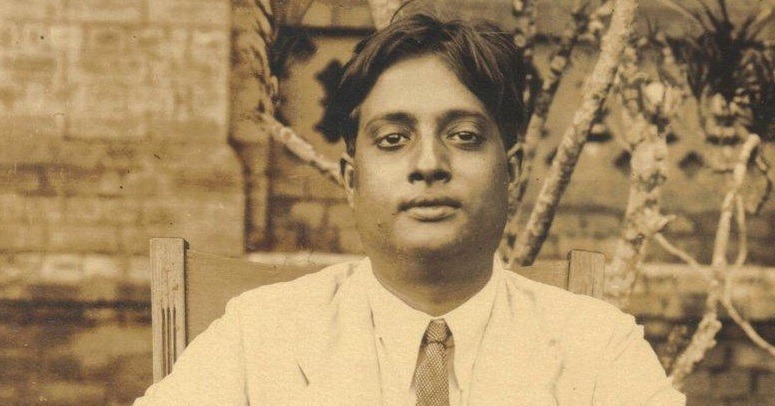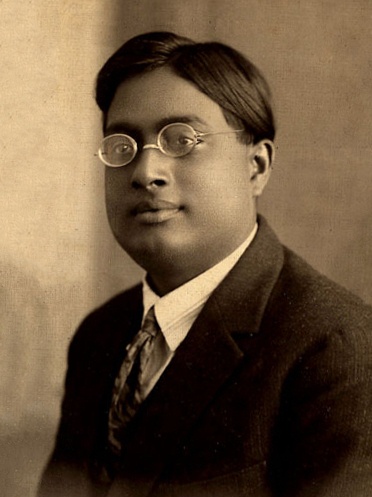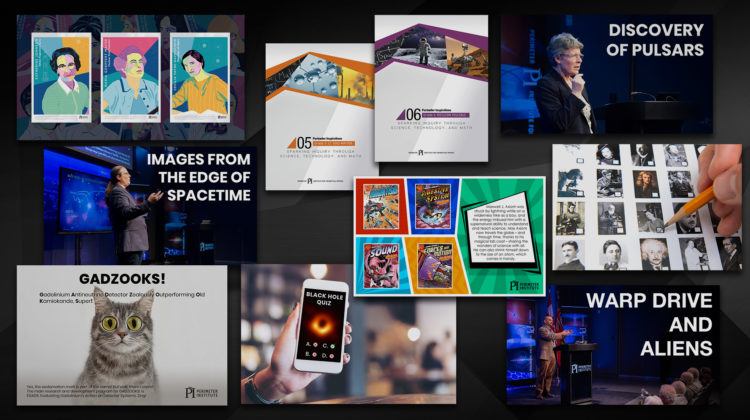Take a self-guided tour from quantum to cosmos!

You wouldn’t be reading this if it weren’t for lasers.
Though mostly hidden from sight, lasers are the backbone of our information economy. As the light in fibre optic cables, they make the internet possible. They read and write data onto CDs and DVDs. They guide airplanes and talk to satellites. Even books are not immune: most of them are laser-printed.
The roots of the laser go back to 1917, when Einstein discovered “stimulated emission,” where an atom in a high-energy state is brushed by a photon of the right energy, and emits a second photon identical to the first.
It would be decades before the theory of stimulated emission became the technology “light amplification by stimulated emission of radiation” – or “laser” for short. Along the way, there were dozens of scientists and engineers, the dawn of fields like quantum chemistry and solid-state physics, and an epic patent battle that turned on a sketch that a graduate student had had notarized at a candy store in the Bronx.
But back at the beginning, there was a sweet-natured self-effacing physicist named Satyendra Nath Bose – S. N. Bose. Born in Calcutta (now Kolkata), India, in 1894, Bose was a child prodigy who studied mathematics at university, eventually earning a master’s degree.
Unlike most world-shaping scientists, he did not go on to earn a PhD. Instead, he began teaching himself physics, borrowing textbooks on the newest theories written in German and then teaching himself German so that he could study them.
Brilliant mind, brilliant timing

Bose dove into physics in about 1917. It was an exciting time for the field. In 1900, German scientist Max Planck had discovered that electromagnetic energy could be emitted or absorbed only in discrete chunks, which he called quanta. It was a moment that changed physics, the dawn of the quantum age.
But there was something unsatisfying about Planck’s discovery. Even Planck admitted he had introduced his famous formula as a kind of fudge factor to make the theory fit the data. Many physicists, including Einstein, tried to derive Planck’s formula from first principles, but all failed. Bose set himself against the problem cheerfully, seemingly unaware that it had already defeated the best minds of the age. And amazingly, the young scientist solved it.
Bose’s key insight was to introduce a brand-new kind of statistics. In normal statistics, if you flip two coins, they have four possible ways they can fall: head-head, head-tail, tail-head, and tail-tail. The odds of getting two heads is therefore one in four. Bose suggested that because you can’t tell one photon from another, head-tail from tail-head are indistinguishable: effectively one possibility. If coins worked this way, the odds of getting two heads from two coin-flips would be one in three.
To both physicists and mathematicians, this sounded ridiculous. To Bose, who was both, the proof was in the pudding: his new statistics worked. He wrote a paper on the matter, “Planck’s Law and the Hypothesis of Light Quanta,” but the journals he sent it to rejected it. So Bose did another ridiculous thing: he sent the paper to Einstein personally.
The year was 1924. Einstein was famous already and flooded with mail. Still, the paper caught his eye – possibly because it tackled a problem that he had been unable to solve. He translated the paper into German and arranged to have it published by one of the best journals in the field, Zeitschrift für Physik, with a note: “This appears to me an important step forward.”
An important step forward
Einstein was understating it. Bose’s discovery was so important that Einstein began work on a series of papers on what he termed “Bose statistics” – they’re called Bose-Einstein statistics now. It was so important that particles that obey such statistics – particles that like to occupy a single quantum state, lying indistinguishably head-tail and tail-head on top of each other – came to be called bosons. Photons, it turns out, are bosons.
Which brings us back to lasers. A typical beam of non-laser light is like a choppy sea – the quantum waveforms from the different photons overlap and crash into each other and partially cancel each other. In a laser beam, all the waves are moving together to produce a single big-wave train – as if all the power of the ocean were concentrated into one wave. This is called coherence, and it’s the reason laser light packs such a punch and is so useful in transmitting information.
The coherence is possible because many photons can occupy a single quantum state. Without Bose’s remarkable insight and powerful new statistical tools, physicists could never have understood this – let alone have harnessed the phenomenon to create new technologies, and then new industries, and then new economies.
As for Bose himself, he somehow gained the reputation of a genius who didn’t do enough with his gift. Perhaps it was because he didn’t concentrate solely on physics: he did research in minerology, chemistry, geology, anthropology, zoology, engineering, and literature in both Bengali and English. Perhaps it was because he was soft-spoken. When Marie Curie told him he’d have to learn French to work with her at the Radium Institute, he was too shy to tell her that he already spoke it fluently. When other Indian scientists asked why their homegrown quantum founding father had never won a Nobel Prize, Bose demurred: “I have all the recognition I need,” he said.
And maybe so. He was, by all evidence, happiest in front of a chalkboard with a handful of students, or talking with his friends over endless cups of chai. He liked company. When Paul Dirac visited him in India, he complained about picking up some of Bose’s students in an already crowded car: “Oh, we believe in Bose statistics here, Paul!” Bose laughed.
Bose died, still happy, in 1974.
In 2012, a new kind of boson – the Higgs boson – was discovered, and the press scrambled to write about Peter Higgs. In India, though, they also wrote about Satyendra Nath Bose. And when they wrote about the boson, they used a capital B.
How much do you know about the scientist who knew so much about our universe?
The interests of fundamental researchers and tech companies are not so far apart.
Are you searching for ways to both entertain and educate yourself — and perhaps the young people at home with you? Perimeter has loads of free science content for every age and scientific background — from curious stargazers to experts in cosmic inflation, and everyone in between. Below are some highlights of Perimeter’s “Slice of […]





















































































